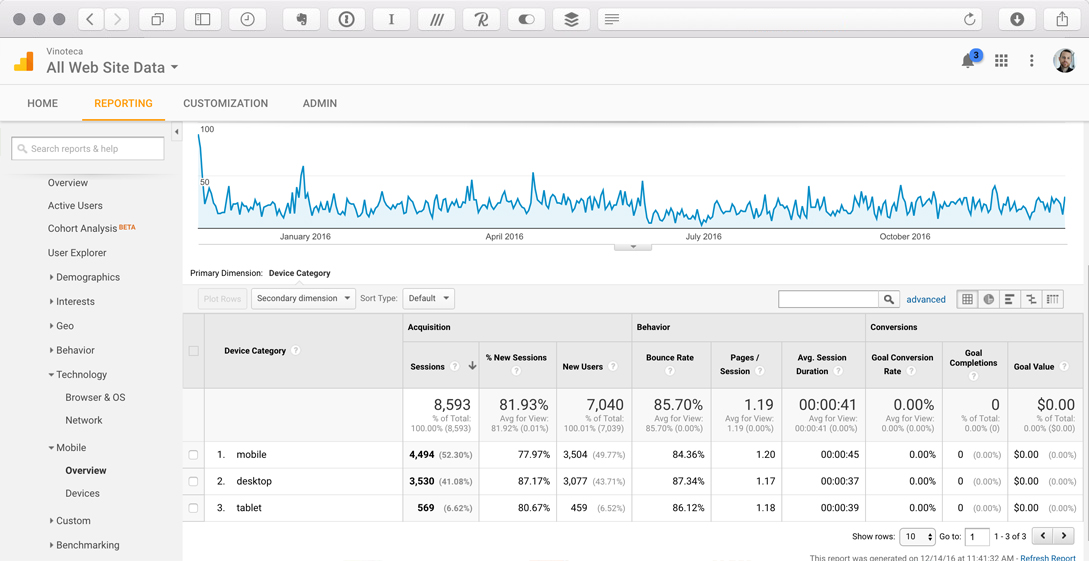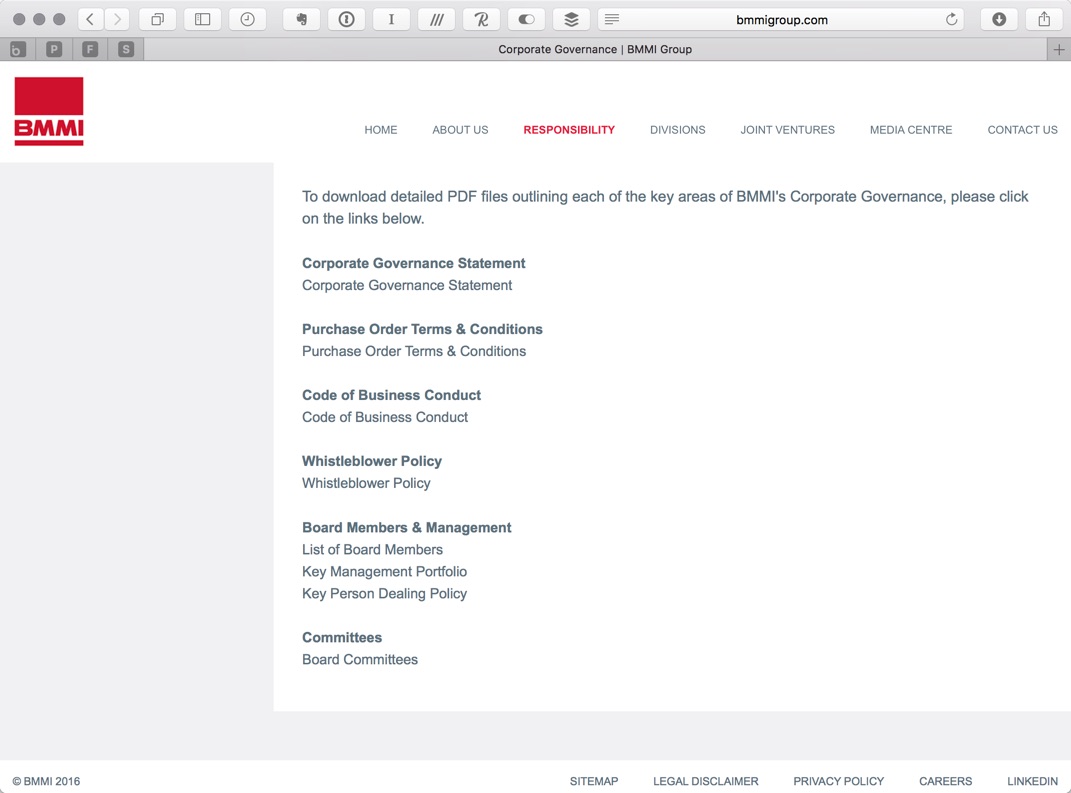A lack of customer focus
One clear weakness in BMMI’s approach to digital is a lack of customer focus. This manifests itself across almost all the channels the divisions and subsidiaries use.
During the course of the interviews, only Alosra was able to clearly identify their target audiences. Without knowing who they are talking to, it's next to impossible for BMMI and it's divisions to effectively "win the hearts and minds of our customers by delivering exceptional service."
This weakness is particularly worrying given the changing business landscape. People have more choice than ever, easy access to the competition and a platform to complain. In such an environment, customer service is paramount. You only need to look at poor customer reviews on a site like Trip Advisor to see how damaging a bad experience can be. An experience that begins with your online presence.

The web provides customers with a voice to complain and instant access to every negative review.
89% of customers have stopped doing business with a company after a single poor experience. (Source). So how is BMMI failing its customers online?
Poor customer research
You get a sense from visiting many of the BMMI sites that there has been little research into their users. Research into who these audiences should be or what it is these audiences actually want.
For example the BMMI Group site neglects a key audience of potential or existing investors. Although financial and forecast information is available it is hard to find. It is hidden in PDF reports that are themselves found in a section for the media. To date, the primary reason for publishing this information online has been to fulfil governance requirements. With this box ticked, rather than consider other potential audiences, they have been ignored.

Valuable information for potential investors is hidden in a section labelled for the press.
By contrast, GSS posts news aimed at investors, the media and potential employees. At present, there is little content that would encourage a potential client to hire the company.

The GSS homepage is dominated by news aimed at investors, the media and potential employees. There is little content for prospective clients.
Little understanding of the customer journey
Not only is the user yet to be defined, there is little sign that BMMI has considered their journey. Every customer passes through a series of steps when interacting with an organisation. It is important to understand this ‘sales funnel’ to include digital throughout the process.
For example, understanding the 'journey' of buying groceries is important to Alosra. Groceries is a chore that few are passionate about. Most people are too busy to hang around waiting for a grocery delivery. Although more options have been added since our initial review, a three hour delivery slot is still too long and will become problematic as the marketplace becomes more competitive. In the United Kingdom, for example, a one hour delivery slot is standard.

To compete online Alosra will have to be more competitive in areas such as delivery times.
You could argue that this is not a digital problem. But this highlights an important fact. Success in the digital world is not about bolting technology onto existing business processes. It is about allowing digital to alter how you operate in every area.
Ironically, BMMI Shops offers same day delivery, a great customer service feature. Unfortunately this is underplayed on the site and only becomes apparent once you have made the decision to buy. Raising awareness of this service pre-purchase would create an enticing reason to complete an order.
BMMI will need to make business changes across the entire company to remain competitive in a digital world.
Another example of the importance of understanding the user journey is the BMMI restaurant subsidiaries. Where the Vinoteca website has an internal page for table reservation that does not provide real-time booking functionality, the Facebook page links through to a third party booking application (www.eatapp.co) and the unfinished Café Amsterdam landing page only provides a telephone number.
Booking a table is a key component in the user journey. Customers no longer want to call and wait on hold to make a booking. They want to book online and they want to feel confident in doing so.

Facebook pages link to the eatapp online booking system, but the restuarant websites do not.
Café Amsterdam does allow online booking via their Facebook page. Why can people book on Facebook but not the website? This is a sign of how disjointed the user experience has become.
The GSS website is key example of how BMMI's lack of internal expertise has resulted in the customer journey being ignored. When purchasing a B2B service, customers will need to compare more than one supplier. GSS makes this hard to do by failing to address fundamental questions. Neither do they provide any downloadable material summarising their offering.

GSS does not make it easy for customers to access key information to allow comparison to the competition.
Failure to answer user questions
The failure of GSS to answer user questions is universal across all BMMI websites. Instead, BMMI focuses on what they want to say with little thought about what the user wants to know. This appears to be because little to no time or budget has been allocated to ask real users what they want to know when visiting the website.
For example, Alosra does not say why people should shop with them over the competition. You also have to hunt to find answers to questions about returns or store locations whilst there is virtually no information on any of the products themselves. These are basic things people want to know.
But even more telling of this failure to think about the user are the restaurant sites. They fail to address basic questions around areas such as dietary requirements or holiday opening hours. Café Amsterdam doesn’t even show the customer a menu.
 The Cafe Amsterdam single page website fails to address any questions might have.
The Cafe Amsterdam single page website fails to address any questions might have.
Instead BMMI is treating digital as another marketing channel. One where it broadcasts offers and other marketing campaigns. This is a fundamental misunderstanding of the role of digital. Digital channels have more in common with a physical store than a billboard or TV advert. They are the place people buy, look through your products and ask for advice.
An internal focus
The digital channels suggest that BMMI is too inward looking to think about user needs. They have approached digital based on available resources and built their sites around internal structure, rather than user need.
For example, on the BMMI Group site, the investor reports are under the media centre. It's likely that this decision was made because the same people responsible for communications also manage the reports.

GSS displays a list of clients under their locations section.
Also, GSS lists clients under location. Although the client logos look attractive and fill the page with content, users would not consider looking under location for this information.
Then there is how the divisions section on the BMMI group website is organised. This is representative of how BMMI operates internally. Yet the section makes it hard for users to find links to subsidiary websites which should be a primary role of this section. For example, 'Supermarkets' rather than 'Alosra', 'Contract Services & Supply' rather than 'Global Sourcing & Supply' or 'Beverages' rather than 'BMMI Shops'.
Finally Vinoteca looks great on a desktop PC (where employees would see it). But it is unusable on a mobile device (which the majority of customers are using). In 2016, 59% of the traffic to the Vinoteca site came from mobile devices.


La Vinoteca Barcelona is almost impossible to use on a mobile device, the primary point of access for the majority of users.
No culture of usability testing
The final manifestation of a lack of focus on customer needs is an obvious absence of testing. Many of the sites contain major usability issues. Issues that even a basic level of usablity testing would identify.
BMMI should be regularly testing their digital channels with real users. This is the only way to ensure people can actually find the information they are looking for. Even a cursory look around the sites shows this is not happening.
For example, the BMMI Group site has a number of issues. Just three include:
- The Careers page does not list available positions.
- Some pages such as the Joint Venture page are redundant.
- Hyperlinks within body content are not clearly defined.

Issues like invisible links are missed because of a lack of testing.
Another example is with BMMI Shops. We encountered a number of usability issues that would have been identified through testing. Issues such as:
- Navigation arrows that don't actually do anything.
- Key navigational items such as categories hidden under dropdown menus.
- Confusing information architecture such as the difference between feedback and contact.
- A lack of guest checkout.
- Confusing sign up experience when validating your email address. Users are taken to their account page instead of returning to the checkout process.
- A request for card information on account creation without clarifying what type of card or account.

BMMI Shops request for card information on account creation without clarifying what type of card or account.
Some simple usability testing would have identified all the above problems and more.
Recommendations for improving customer focus
How then can BMMI ensure a greater focus on customer needs? This is a question that we will answer in more depth in the digital strategy. But, some initial recommendations include:
- Undertake some user research into the key audiences for each subsidiary of BMMI.
- Carry out regular usability testing on all existing digital channels.
- Restructure content on digital channels around user needs and questions.
- The appointment of a customer experience executive. Somebody who can champion the needs of customers across all companies and channels.
- Consider digital from a users perspective. What can BMMI do to improve a customer's experience? If that means investing in new resources rather than leveraging existing ones, this approach must be considered.
The appointment of a Chief Digital Officer (CDO) at board level would be a big change for the organisation. But this is an approach being widely adopted. Seventy-seven per cent of brands answering a Gartner survey last year on marketing budgets say they now have a CDO or equivalent (Source).
A chief digital officer would also help address other issues we have found. This includes a lack of design thinking.